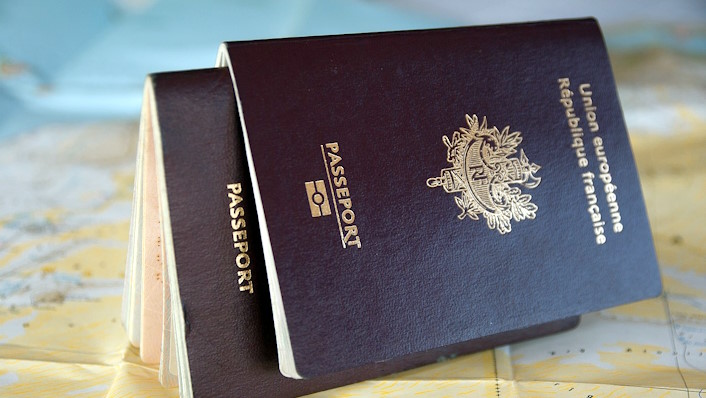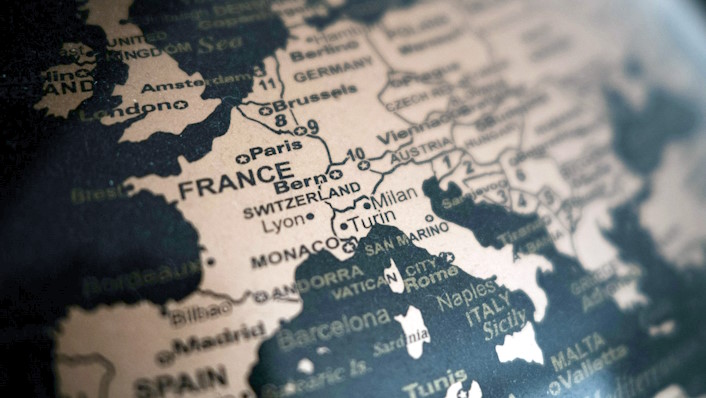How to Get European Citizenship as an American in 2024
U.S. citizens can get a European passport through descent, residency, marriage, or through passive income or an investment.

If you’re one of the 80% of Americans who can trace their family roots back to Europe,1 you might be interested in obtaining citizenship back in the “Old World”. Even if your ancestors had no connection to the continent — or you just can’t prove it — securing a passport from a European country offers a lot of well-known advantages. More and more people are realising that, to the point where European embassies in the U.S. are reporting long backlogs for citizenship applications, with waiting times ranging from 1 to 3 years.
Of course, there isn’t just one European passport, so you’ll need to explore the specifics of each country’s rules and opportunities — they will vary depending on your situation. To make things easier for our pals from the U.S., we’ve created this handy overview of how you can get European citizenship as an American.
Whether you’re itching to rediscover your ancestral ties, chase a new adventure, live the Mediterranean lifestyle, plan a peaceful retirement, or whatever your dreaming of, this guide should put you on the right path.
Understanding “European” citizenship
EU, EEA, EFTA, Europe — isn’t it all the same thing? Not exactly. Navigating the acronyms and terminology of European citizenship can be very confusing, even for Europeans themselves. Here’s a quick primer.
EU citizenship:
- An EU passport is issued by any of the 27 European Union member states. Not all countries in Europe are part of the EU.
- With citizenship and a passport from one EU country, you’re free to live, work, and travel across all EU countries without needing a visa or permit.2 For example, Portuguese citizenship gives you the right to live in Ireland, Bulgarian citizenship in Spain, and so on.
- For visa-free travelling, most EU passports are actually better than your U.S. passport and among the best in the world.
EFTA and EU citizenship:
- While not part of the EU, Norway, Liechtenstein, Iceland, and Switzerland belong to the European Free Trade Association (EFTA).3
- By getting citizenship from an EU or EFTA country, you will usually have the right to move to and live in any of the member states of these unions as long as you can prove you’re able to support yourself.
- Citizenship in the UK, Serbia, Montenegro, and other European countries doesn’t grant you these rights.
Though many Americans have a specific destination in mind, it’s not necessarily the easiest place to get citizenship. When weighing your options, think about going for a country with a shorter timeline that you use as a stepping stone to gain access to the country where you ultimately want to settle.
How Americans can get European citizenship
Americans can get European citizenship through descent, residency, marriage, and in some cases, through investment. Here are the options you should know about before you cross the Atlantic (or attempt to):
1. Citizenship by descent
This is the fastest and cheapest route for Americans who have parents, grandparents, or in some cases, great-grandparents or an even more distant ancestor from Greece, Italy, Hungary, Poland, and several other countries. The generational limit varies based on the European country you’re applying for citizenship from. Typically, the processing fee for citizenship by descent is around €200 to €300. Millions of Americans are eligible for citizenship by descent, although most are unaware of this fact.
2. Citizenship by naturalisation through residence
If you don’t qualify for citizenship by descent, naturalisation is the second best option. Almost every country in Europe allows Americans and other nationalities to become naturalised citizens after living in the country for a specific period, usually 5 to 8 years but sometimes less.
For example, in Portugal, you can get residency by having a passive income equal to the country’s minimum wage and apply for citizenship after just 5 years. In Spain, if you hold dual citizenship with the U.S. and an Ibero-American country, you can become a citizen after just 2 years of residency.
To pursue citizenship by naturalisation, you first need a visa to enter the country and then a long-term residence permit. You can get a visa in a lot of different ways: you could be self-employed, start a business, be a digital nomad or remote worker, rely on passive investment or rental income, or even bring in pension funds.
3. Citizenship by marriage
Marrying or being married to someone with citizenship in an EU or EFTA country can significantly expedite the qualification period. You usually first have to apply for a family reunification visa, which requires proof that you have lived together for a few years and are then fast-tracked to get citizenship. For example, Germany and Portugal allow spouses to apply for citizenship after just 3 years of marriage, while Spain has reduced it to just 1 year.
4. Citizenship by investment
Although not a straightforward path for the average person, more affluent individuals can get residence — often “no-show” residence — and ultimately citizenship in a European country by investing a few hundred thousand euros in a local venture capital fund, real estate, state bonds, or by starting a company or becoming a major shareholder in an already existing business. Portugal, France, Spain, Bulgaria, and many other countries have citizenship or residence through investment programmes.
Overview of Europe’s nationality laws
Why Americans want European citizenship
If your dream is to live somewhere in Europe, having a passport from one of the EU or EFTA countries is the ticket that will take you there. Citizenship from just one of these countries grants you the freedom to live, work, travel, study, and retire in not one but 31 countries in total. As you get older and life changes, you can leverage your European passport to relocate to a place that aligns with your priorities. You’ll also be able to migrate back and forth between the U.S. and Europe if necessary, usually without any special permits or heavy-duty paperwork.
Americans with a passport from an EU or EFTA country can:
- Enjoy the best of both the U.S. and Europe
- Live, work, or retire in any of the 27 EU countries (or 31 including EFTA)
- Live by the Mediterranean, in a quaint mediaeval village, in an Alpine farmhouse, or wherever you’ve always imagined
- Work for U.S. companies, which usually have higher salaries, while benefiting from lower living costs in Europe
- Travel visa-free to over 153 countries
- Provide your children with affordable or free education from school to university
- Access public healthcare systems across Europe, usually free of charge
- Pass on citizenship advantages to your spouse, children, and even grandchildren
In essence, you get to embrace your American identity along with European privileges while enjoying the perks of being part of two of the world’s economically strongest and freest regions.
European citizenship by descent for Americans
Citizenship by descent, also known as citizenship by ancestry, means that someone is eligible to claim citizenship based on the nationality of their parents, grandparents, great-grandparents, or even more distant ancestors. Some European countries have no cap on how far back you can trace your family tree for your citizenship application, though these often have a certain historical date where they draw the line.
Whether knowingly or not, millions of Americans qualify for citizenship in one or more European countries due to their ancestors. For example, descendants of Italian immigrants may be able to claim Italian citizenship even if their ancestors arrived on a boat over 150 years ago. Hungary is another country with very lenient requirements. If you’re able to produce sufficient evidence of Hungarian ancestry through a paper trail and are willing to learn the Hungarian language, you have a high chance of acquiring citizenship. How challenging the process is depends on the country and how many generations you need to reach back in your family history.
European countries offering citizenship by descent
Here’s a list of European countries that accept ancestry-based citizenship, going back 1, 2, 3, or even more generations. Bear in mind the categorisation isn’t set in stone: most countries have unique rules and exceptions to those rules that might put them in more than one category.
How to get citizenship by descent as an American
The steps vary depending on the country and how far back in your family history you need to reach. If you’re a first or second-generation descendant, the process is usually not very complicated, while if you’re tracing the path to a great-grandparent you’ve never met, you’re likely in for months of tedious document hunting. Here’s a rough idea of how to proceed.
1. Research your family history
This may seem obvious, but start by talking with your parents and grandparents to learn about your family’s roots. The key here is to get concrete evidence like birth certificates, marriage records, or other official documents that can create a solid paper trail for your citizenship application. You need full legal names, dates, and places — not just a verbal claim — that can verify your eligibility.
Was your parent born in Europe?
Citizenship is inherited by children from their parents in most European countries. This means if either of your parents, or both, were born in a European country and have citizenship from that country, you may very well be eligible for citizenship.
It usually makes no difference whether you were born in the country or abroad, though some countries restrict dual citizenship while others require your parents to register your birth before a certain age.
The simplest scenario is when your parents already registered your birth with their home country’s authorities when you were a child. However, there’s a high chance they didn’t take that step. If that’s the case, you’ll need to apply for citizenship now. The process is often quite straightforward and could involve just a few hours of paperwork. If you have children yourself, this method is also one of the easiest ways to continue passing down citizenship through the generations.
Was your grandparent or great-grandparent born in Europe?
If you’re one of the millions of Americans with a European grandparent or great-grandparent who immigrated to the U.S., you may also be eligible for citizenship through descent. Several countries allow citizenship to traverse multiple generations and extend the right to those who were born and live abroad, even if they are unaware of their inherent nationality. Italy and Portugal are examples of countries that extend naturalisation to grandchildren.
To apply for citizenship based on the nationality of your grandparent or great-grandparent, you typically need the birth certificate and marriage certificate of your grandparent and of your parent in the succession line, in addition to your own records. More and more often, a language proficiency exam or proof of connection to the culture is also necessary.
If your grandparents came from a country that only allows citizenship to be passed down to the immediate descendants of the first generation, meaning your parent(s), and they are still alive, they might need to get citizenship first. Once they successfully become citizens, you could then apply based on their “new” nationality. This would be moving from a second-generation to a first-generation applicant status, though this approach doesn’t work everywhere.
2. Visit the official websites to check eligibility
🇺🇸 The U.S. Department of State has a list of foreign embassies and consulates along with their contact details. You can find it right here.
You want to hear it straight from the horse’s mouth. Find the official government website of the country relevant to you. This will typically be the website of the country’s embassy or consulate in the U.S. or the site of the country’s immigration authority. Look for information on citizenship by descent or ancestry to see if you qualify.
Very often, these government-run sites have general guidelines in English, but the specific details and forms are often only accessible in the local language. For example, Germany and Poland are countries with excellent resources available in English, whereas Greece and Bulgaria don’t.
You can also call the country’s consulate in the U.S. However, the average consulate employee isn’t very knowledgeable about citizenship applications, so very often, you are better off putting your questions into written form.
3. Gather documentation
The immigration authorities will ask you to provide a lot of documents: your birth certificate, your parent(s) and/or grandparent(s) birth and marriage certificates, naturalisation records, and other relevant paperwork, such as death certificates. These papers usually need to be apostille-certified and translated to be recognised.
It’s at this point that you’ll need to ask yourself whether you want to involve an immigration lawyer. Yes, opting for legal assistance will come with a higher cost, but if you’re applying based on a grandparent’s nationality or have to find records of an ancestor from a century ago, a lawyer will not only help you save time but also avoid making mistakes or receiving a rejection. The same goes for filling out the forms.
4. Fill out the forms
You’ll need to complete a citizen application form. If you can’t find this form on a government website, email the consulate and ask for it.
When you’re filling it out, follow the instructions carefully, and at all costs, avoid making any mistakes. It’s very important to keep everything consistent in the documents you submit—like names, last names, places, and dates.
If you fill the form out incorrectly, your application will be considered invalid, which means you will have to start over and end up at the back of the line.
5. Book an appointment and submit your application
Find the email or booking system of the consular office for the country you’re applying to and set up an appointment. Ask for a list of documents you need to bring along to make sure you have everything ready. When it’s appointment day, hand in all your documents along with your application.
6. Wait with fingers crossed
Now, you just have to wait for them to process your application. How long it takes can really vary depending on the country and how complicated your situation is. The deadlines they mention on official websites are usually what they legally have to follow, but in real life, things can take much longer. Don’t be surprised if what they say is one year turns into two or three.
Do you need a lawyer?
Whether you decide to get legal help or go it alone, there will be a lot of paperwork to deal with, and the process will take up a lot of your time. There are times when having a legal pro on your side just makes sense, but if you have a simple citizenship case, tackling it on your own isn’t necessarily a bad idea. Here are some points to consider for each approach:
Doing it yourself
- First-generation or second-degree descendant: If you’re applying for citizenship based on your parent’s or grandparent’s nationality, are able to gather all the required documents, and follow the necessary steps, going solo usually isn’t very difficult and could save you thousands in lawyer fees.
- It’s becoming more accessible: European government websites more and more often provide clear guidance in English and other major languages and have even begun to offer bilingual forms. The days when consular or immigration staff refused to speak English are also mostly behind us, which makes it much easier for regular people to handle their cases themselves.
- You’re able to deal with bureaucracy: If you’re comfortable navigating bureaucratic processes, reading legal texts, and don’t mind handling the paperwork, doing your citizenship application yourself can be a reasonable option.
- You want to control the process: Remember, as the applicant, you’re the one who needs to show up at the consulate or at the immigration building in person. You’ll be doing most of the work regardless of whether you hire a professional or not. Also, lawyers can be very slow to respond, so doing it yourself could help speed up things.
When hiring legal help might be worth it
- Citizenship through 2nd generation or more: Applying for citizenship based on a grandparent’s nationality isn’t always easy, and if you need to go back to your great-grandparents or even further back, the requirements are typically quite complex. Often, you’ll need to provide additional proof, such as ties to the national community, as seen in Portugal’s case or navigating a web of obscure rules, as in Italy. A lawyer can help you navigate the process.
- Complex cases: Obtaining birth or marriage certificates for your grandparents or great-grandparents from a small European village where the clerks don’t speak English or have specific procedures is not easy. Or finding out whether they were born in a territory that once belonged to one country but has become part of another. These cases are not for the average layman.
- Citizenship through residency or marriage: If you’re applying for citizenship because you’ve lived in a country for a certain period or because you married someone from the country, proving your eligibility is unfortunately not always as easy as it should be. Hiring a professional can help you navigate the intricacies of the requirements.
- Dealing with ignoramuses: Unfortunately, consular staff and immigration clerks can be some of the most difficult public employees to deal with. If you feel that the person handling your case might jeopardise your citizenship application, having a lawyer on your side shows that you’re following the rules and won’t be easily pushed around. You may have legal rights on paper, but in practice, you sometimes need to assert those rights vigorously to ensure they are upheld.
- Avoiding rejections: Lastly, small mistakes in your application can lead to rejections. Commas, misspellings, dates, missing apostrophes – those are all small things, but you absolutely want to get them right. A lawyer has the responsibility to help you avoid these pitfalls by ensuring your paperwork is in order and compliant with all requirements.
Unlike residency applications, citizenship applications typically can be resubmitted if they’re initially rejected. Just keep in mind that each submission incurs a financial cost.
Sources
- United States Census Bureau. “Responses to the Ancestry Question by Detailed Ancestry Code: 2000.” January 22, 2007. https://www.census.gov/data/tables/2000/dec/phc-t-43.html
- European Commission. “Free movement – EU nationals.” https://ec.europa.eu/social/main.jsp?catId=457
- EFTA. “Free Movement of Persons. https://www.efta.int/eea/policy-areas/persons



